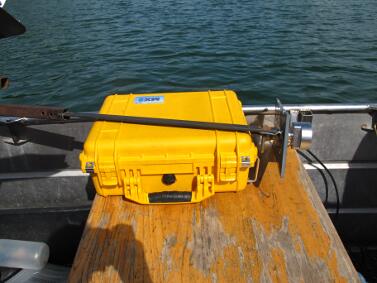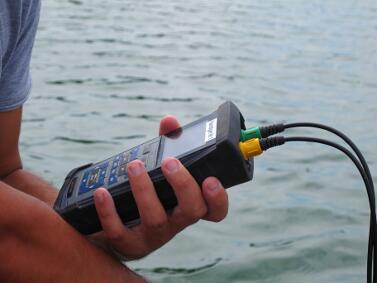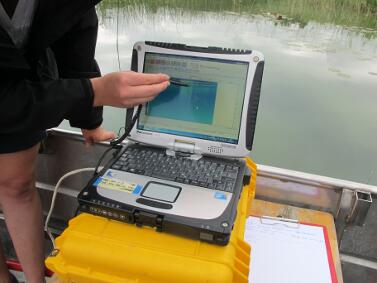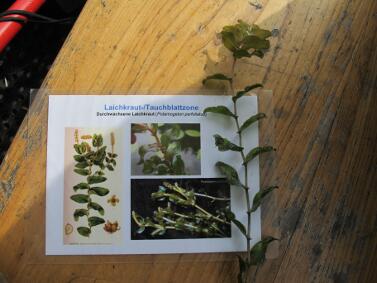Macrophytes perform many ecosystem functions in aquatic ecosystems and provide services to human society. One of the important functions performed by macrophyte is uptake of dissolve nutrients (N and P) from water. Submerged aquatic plants can act as measurable indicators of ecological conditions occurring within a lake. Hydroacoustic techniques are widely used and well proven in assessing seafloor habitat characteristics. Data is collected with a echosounder developed specifically for aquatic habitat mapping. The amplitud of the signal sent is fundamental for the analysis and detection of plant stands, as well as bottom depth and bottom substrate.
Bathymetric lines (depth) and plant heigth derived from echosounder signal (see map bellow). The height profile shows the depth until the macrophytes still grow. This depth is about 8 meters, which for this lake it represents the limit of the euphotic zone.





